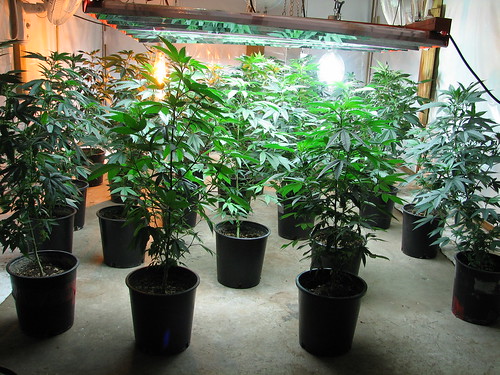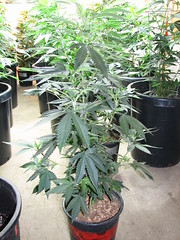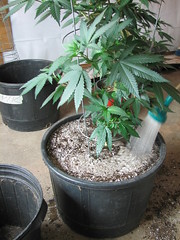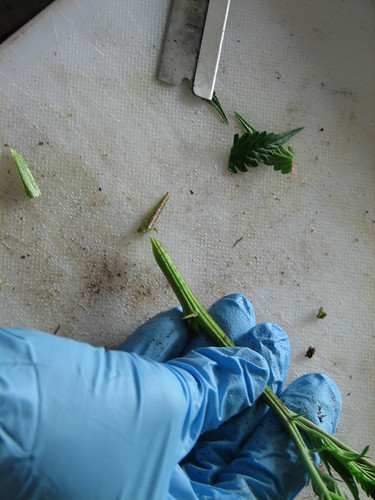mellokitty
Moderatrix of Journals
thank you for joining in, i felt that a fresh grow deserved a fresh journal.
a couple of room shots:


a brief synapsis: the girls are og kush from clone:
for our veg, we are running:
2 x 12 bulb t5 badboy
1 x 8 bulb t5 badboy
2 x 1kw mh (we were running 1 mh and 1 hps, but the difference in vegetative growth was noticeable so we recently switched out the hps for another mh)
in flower, we will be running
13 x 1000w hps
and possibly doing some blue spectrum supplement experiments with the t5's (nods to pr0fesseur)
nutes will be
grotek solotek bloom (1 part base nute)
pro-silicate (stress relief + K)
vitamax (b complex)
calmax (cal/mag supp)
.... and a couple other things; we'll talk about them as we come to them
here's the first video update of the current girls :
[youtube]0OsEePKDqRc[/youtube]
thank you for tuning in, please stay tuned, more updates to come!
a couple of room shots:


a brief synapsis: the girls are og kush from clone:
for our veg, we are running:
2 x 12 bulb t5 badboy
1 x 8 bulb t5 badboy
2 x 1kw mh (we were running 1 mh and 1 hps, but the difference in vegetative growth was noticeable so we recently switched out the hps for another mh)
in flower, we will be running
13 x 1000w hps
and possibly doing some blue spectrum supplement experiments with the t5's (nods to pr0fesseur)
nutes will be
grotek solotek bloom (1 part base nute)
pro-silicate (stress relief + K)
vitamax (b complex)
calmax (cal/mag supp)
.... and a couple other things; we'll talk about them as we come to them
here's the first video update of the current girls :
[youtube]0OsEePKDqRc[/youtube]
thank you for tuning in, please stay tuned, more updates to come!































 [/FONT]
[/FONT]